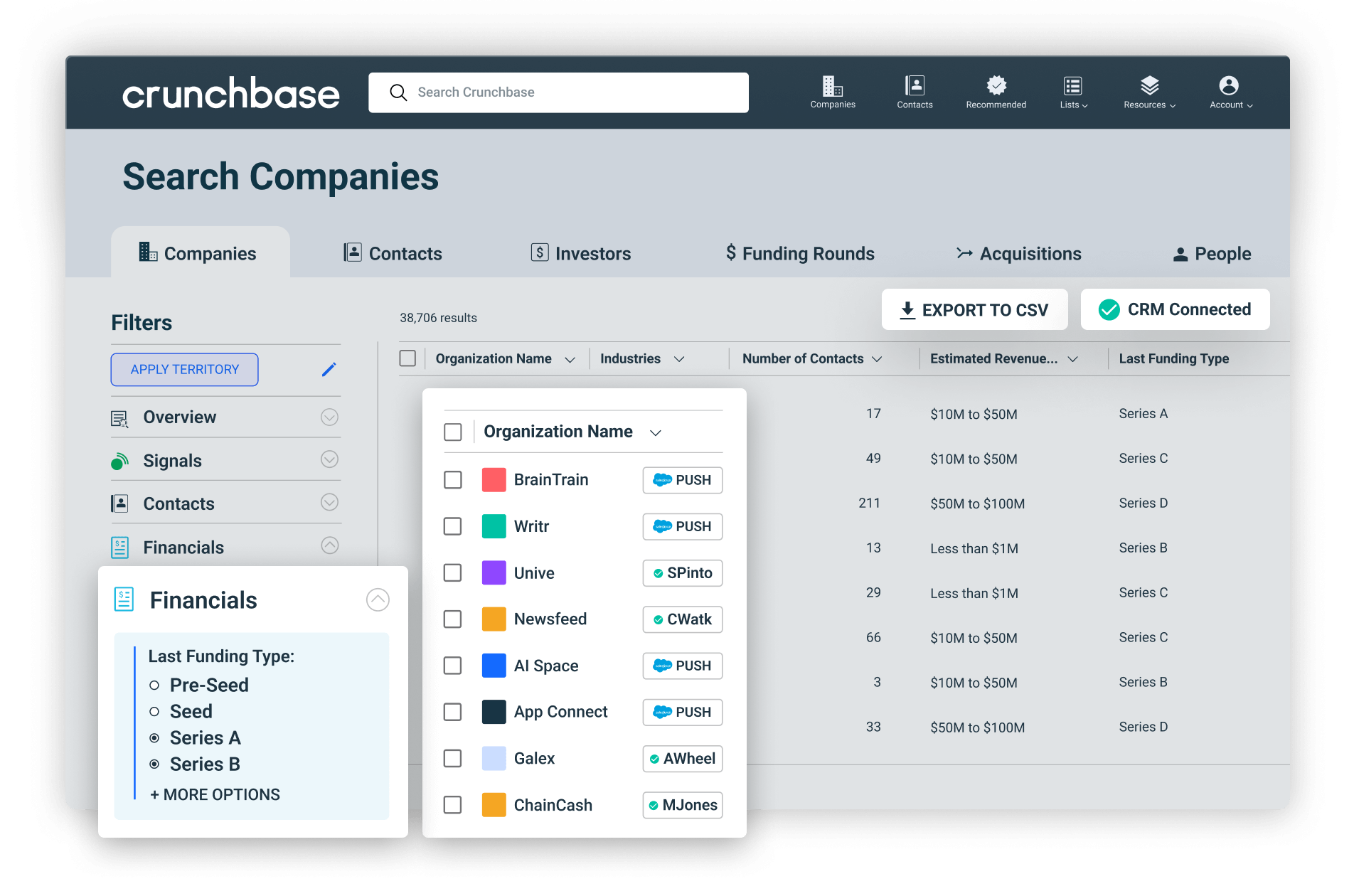UserTesting is a human insight platform that helps companies capture direct feedback from real users to improve products and experiences.
Lack of actionable data made it hard to identify prospects with the highest chance of converting into opportunities.
For a sales team, targeting companies that mirror current customers is an effective prospecting strategy. However, how do you know if they’re in a position to buy? And how do you find prospects that are in a position to make buying decisions at scale?
That’s the situation UserTesting found itself in.
The company saw a significant percentage of its inbound inquiries coming from venture-backed startups. However, not every startup that reached out was in a position to use its platform. Needless to say, UserTesting’s sales team spent too much time on prospects that were not going to make a buying decision anytime soon.
With such a high volume of inquiries, plus outbound efforts, the team had to figure out a way to separate high-quality prospects from low-quality. In addition, once they determined their ideal customer profile, or ICP, they needed a way to find more of them.
For Katie Harkins, UserTesting’s VP of sales, figuring out how to do both was an important step toward putting her team in a better position to succeed and creating a stronger pipeline.
Implement Crunchbase Enterprise to help identify high-growth startups at scale.
Analyzing UserTesting’s customers, Harkins and her team found that the prospects they had the most success with had one thing in common: they had clear signs of fast growth in the form of raising new rounds of funding and adding headcount, or both.
To help her team proactively find startups that fit that criteria, as well as better assess the quality of existing inbound inquiries, Harkins implemented Crunchbase Enterprise.
With Crunchbase Enterprise, UserTesting’s sales team gained access to Crunchbase’s entire dataset of private companies. By connecting its Salesforce to Crunchbase, new data that UserTesting didn’t have was added directly from Crunchbase across all of the accounts in its CRM.
“Crunchbase’s Salesforce integration has massively sped up our prospecting and account creation process. I used to go to the company profile page, copy the company website, go into Salesforce, and paste the company website in the search bar to see if anyone on my team was working it. Then I had to manually create the new account and route it to an AE. Being able to push an account into Salesforce in just one click from a Crunchbase profile page is a huge time savings.”
Katie Harkins, VP of Sales, UserTesting
Examples of data added into UserTesting’s Salesforce environment, include:
- Employee size
- Location
- Type of company
- Funding
- Investors
Funding data, in particular, was valuable for the sales team. This buy signal gave them insights into new prospects they didn’t have before. For instance:
- They were able to retroactively look at the funding history of prospects to determine the health of the business.
- They could easily identify companies that raised new rounds of capital with real-time updates to inform outreach.
In combination with traditional firmographic data from Crunchbase, Harkins and her team spent their time on prospects that had a higher chance of converting into customers.
An effective process for identifying rapidly growing startups and improved outbound personalization.
Harkins and her team of 18 used Crunchbase Enterprise to create an effective way of identifying high-growth companies that matched their ICP. In a span of eight months, they found 2,362 new, qualified accounts. Whether the prospects came in as inbound inquiries or were created through outbound efforts, they were in a position to better assess a company’s ability to invest in customer insight solutions.
In addition, with Crunchbase, UserTesting was able to identify customers in its CRM that had similar use cases and firmographics as the prospects being worked by its sales team. These customer stories were used as social proof to help prospects understand how they could use the UserTesting technology for testing, feedback, and research.
“Because of Crunchbase’s Salesforce integration, I can see key data fields in my CRM that help me match prospects and existing customers. This allows me to better understand the prospect, what has worked for customers like them, and provide compelling social proof to demonstrate the value of our product. Without Crunchbase, I would never be able to do that.” Harkins shared.
As a bonus, the insights from Crunchbase helped UserTesting create more personalized outreach. With funding data, for example, its team could use this information to pinpoint prospects that raised capital in a given timeframe and create relevant outreach campaigns to reach them at the right time.
With its sales outreach able to stand out from the generic messages of competitors, UserTesting gained a competitive advantage.
“My top-selling AEs love the real-time email alerts. They don’t even have to think; just wake up, view new company activity in their inboxes, and go prospect.”
Katie Harkins, VP of Sales, UserTesting
From net-new data in Salesforce to surfacing high-growth startups, Crunchbase Enterprise’s actionable insights ultimately helped UserTesting’s sales team put its energy into the right prospects, saving valuable time.



